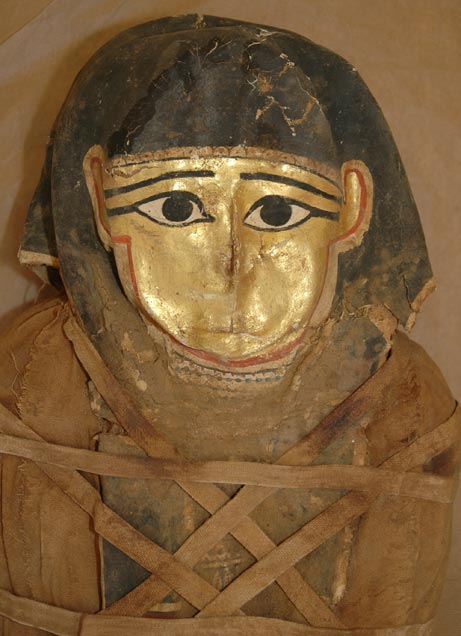The First Dog Mummies Ever Found in Egypt!
 In the heaven of the tomb raiders, an American-Russian team has managed to find 4 ancient tombs with well-preserved mummies, ornate painted coffins, and mummified dogs. The necropolis of Deir el-Banat is located in the oasis El Faiyum, 50 mi (80 km) southwest of Cairo, a place also famous for the discoveries of the oldest elephant fossils, some 50 million years old. Given the intensity of looting in the area, this was a surprise. The cemetery was used from the 4th century B.C. to the 7th century A.D.
In the heaven of the tomb raiders, an American-Russian team has managed to find 4 ancient tombs with well-preserved mummies, ornate painted coffins, and mummified dogs. The necropolis of Deir el-Banat is located in the oasis El Faiyum, 50 mi (80 km) southwest of Cairo, a place also famous for the discoveries of the oldest elephant fossils, some 50 million years old. Given the intensity of looting in the area, this was a surprise. The cemetery was used from the 4th century B.C. to the 7th century A.D.
"An important point is that these mummies are almost untouched. There are not so many [well preserved] mummies in El Faiyum at the moment," said lead researcher Galina A. Belova, a Russian Egyptologist.
In a separate tomb, the team found the first intact mummy ever encountered
in the necropolis. About 150 other tombs from different periods and a great number of poorly preserved mummies were also discovered, but most of the them had been plundered.
"Some of the newly discovered remains are the best yet found from the Ptolemaic era (the era of Greek domination that started soon after the conquest of Egypt by Alexander the Great in 332 B.C.). One mummy was beautifully gilded, and another is in very good condition," Zahi Hawass, Secretary General of Egypt's Supreme Council of Antiquities, told National Geographic News.
An odd burial contained the non-mummified remains of a child and several mummified dogs, unique in Egypt. The four best kept of the newly found tombs host almost intact human-shaped coffins.
"Some showed slight damage near the feet, probably the result of ancient robbers rummaging for riches," said the researchers.
The coffins were decorated with verses and images from the Egyptian Book of the Dead, crucial for the ancient Egyptians to pass from this world to the other. Three of them were wooden, while the fourth coffin, of a child, was made of papyrus, and was located on a different angle from the others.
"The shared burial may have belonged to a single family. It is uncommon to find coffins set at different orientations in this region," said the researchers.
Two coffins hosted mummies covered at the head and feet with vividly colored cartonnage. One mummy had a golden cartonnage mask, a symbol of eternity. One tomb also contained the only intact mummified woman that escaped from the tomb looters. As the tombs in this cemetery are less than a meter (3.3 ft) below the surface, they make easy targets for thieves.
The most interesting finding was the non-mummified body of a child having next to it mummified dogs. The child was naturally mummified by the dry climate, while the dogs were crudely mummified, and varied from puppies to adult dogs.
"They are put in any which way, with no real sense of orientation. Ancient Egyptians were known to keep domesticated pets and sometimes were buried with them. Other animals were included in burials as part of a religious ritual, but this find is unlike any that has been documented," said Salima Ikram, an animal mummy expert at the American University in Cairo.







0 comments:
Post a Comment